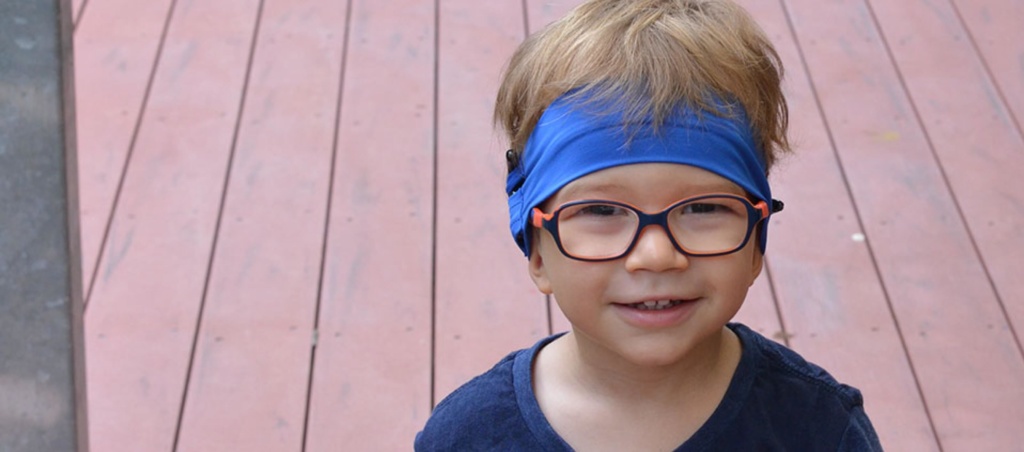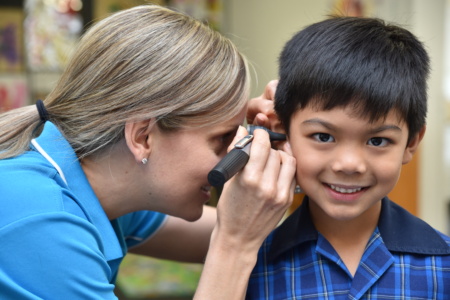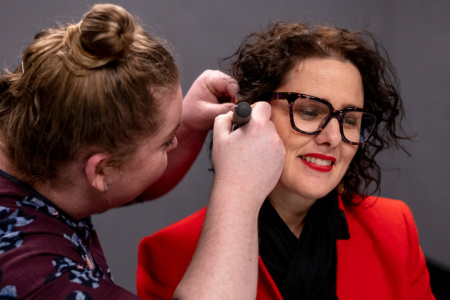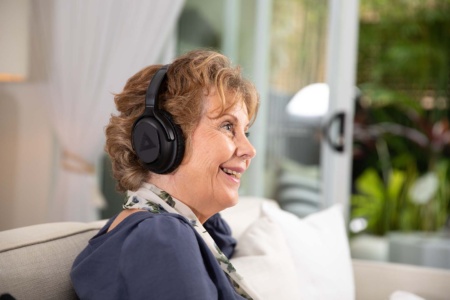Classrooms are noisy and tiring environments especially for children with hearing loss, which can significantly impact their ability to learn.
Check out these tips for fostering an optimal setting for listening and hearing in the classroom – and remember, good practices for students with hearing loss typically translate to great practices for everyone!
Ensure the room is as quiet as possible
Consider fans, background music, noisy thoroughfares and machinery, which all impact a child’s ability to hear clearly. It also makes it harder to concentrate. Reduce echo in a room by having carpeted floors; using stoppers or felt dots on the bottom of chair legs; and even hanging students’ artwork on the wall and from the ceiling to lessen reverberation.
Focus the child’s attention
Calling the student’s name and making eye contact before speaking to them will encourage focused listening. We all use lip reading skills, so make sure you face the group or child when you’re speaking.
No need to shout
Use a conversational volume of voice. This helps to protect you from vocal strain and also ensures that louder sounds (such as vowels, /b/ and /d/) don’t mask the quieter sounds (such as /p/, /f/ and /s/) when you’re speaking.
Rephrase and check for understanding
Allow extra time for the student to process what you’re saying. You may need to rephrase or break down your language into more manageable steps. Ask the student, “What did you hear?” rather than, “What did I say?” and encourage them to seek clarification when needed.
Use acoustic highlighting
Place vocal stress on the important words in your sentences. Drawing attention to particular words or phrases helps the student to better understand key information.

Assistive listening devices
Use assistive listening technology in your classroom, such as Roger Touchscreen microphones and SoundField amplification systems. Reduce noise interference when using these devices by standing still, speaking clearly and ensuring the microphone isn’t covered by clothing or jewellery. Remember to turn off the transmitter when not engaging with the child with the receiver (and remember to switch it back on!). Take turns sharing the microphone during group times and ask other students to wear the microphone when giving presentations.
Allow for ‘listening fatigue’
Listening all day in noise can be tiring for children. Allow for the student to have a pause in focused attention or a ‘listening break’, then cue them back in by using their name.
Seat the child strategically
During group time, seat the child in the second row with their better ear closest to the teacher. This enables the child to observe those in front of them if they have missed something. Be aware of places in the classroom where background noise is louder, and seat the child away from these areas.
Visual cues
When you’re changing the topic or introducing new routines, vocabulary, key words or meaning in a sentence, consider what visual cues you can use to help the child.
Reach for the stars
Have high expectations of a student with hearing loss. Children tend to meet expectations we set for them, so it’s important to aim high so that all children have the opportunity to reach their full potential.









